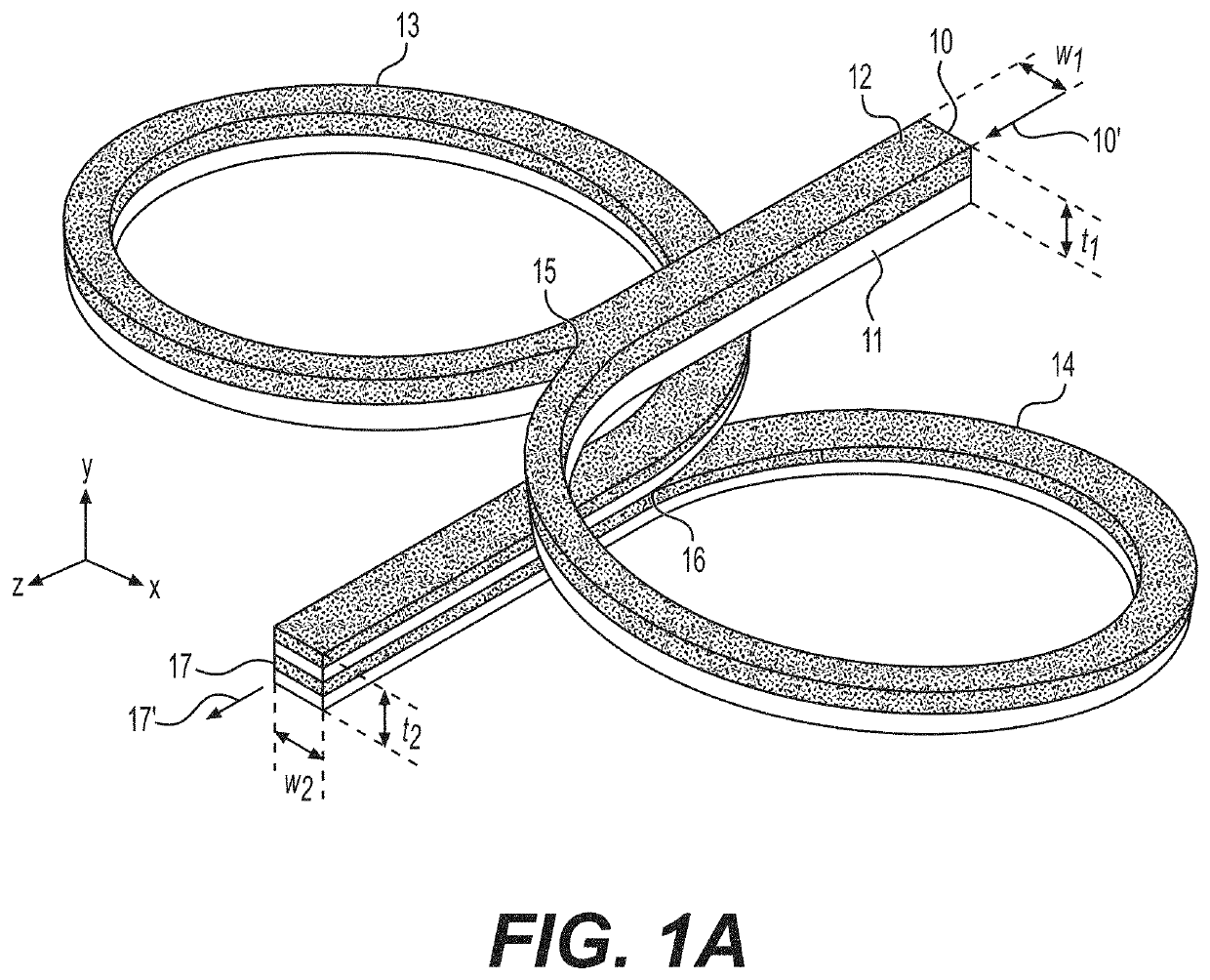Methods for Generating Interfacial Surfaces and Devices Therefor
a technology of facial surfaces and generators, applied in the field of facial surface generators and methods of generating interfacial surfaces, to achieve the effects of reducing (or eliminating), reducing layer rearrangement, and increasing slip
- Summary
- Abstract
- Description
- Claims
- Application Information
AI Technical Summary
Benefits of technology
Problems solved by technology
Method used
Image
Examples
example 1
[0095]An ISG apparatus, similar to the exemplary apparatus shown in FIG. 2, was fabricated to demonstrate its operation under the condition where materials are conveyed through the apparatus by way of pressure. The apparatus was designed to subject an initial two-layer composite stream to a single layer multiplication cycle to form a second composite stream with four layers. The apparatus was configured and operated to generate interfacial surfaces according to the method illustrated in FIGS. 1A-1D.
[0096]An apparatus housing was fabricated as a single component from acrylonitrile butadiene styrene (ABS) plastic using an additive manufacturing (3D printing) process. Internal flow path conduits were formed within the housing during the additive manufacturing process—no subsequent manufacturing processes (additive or subtractive) were required. The housing was oriented such that the inlet conduit was on the top surface and the outlet was on the bottom surface. The housing was raised up...
example 2
[0099]An ISG apparatus with counter rotating rotors, similar to the exemplary apparatus shown in FIG. 4, was fabricated to demonstrate its operation under the condition where materials are conveyed through the apparatus by way of drag, or Couette, flow induced by the rotation of two counter-rotating rotors. The apparatus was designed to subject an initial two-layer composite stream to a single layer multiplication cycle to form a second composite stream with four layers. The apparatus was configured and operated to generate interfacial surfaces according to the method illustrated in FIGS. 1A-1D.
[0100]An apparatus housing was fabricated as two components, similar to the exemplary housing shown in FIG. 4, from ABS plastic using an additive manufacturing process. Flow path conduits were formed in the housing components during the additive manufacturing process—no subsequent manufacturing processes (additive or subtractive) were required to fabricate the housing. The housing was oriente...
example 3
[0104]The apparatus from Example 2 is reconfigured and operated to generate interfacial surfaces according to the method illustrated in FIGS. 5A-5D. The same polymer materials from Example 2 are used. The apparatus housing is reoriented such that the outlet from Example 2 is positioned to be on the top surface and the inlet is positioned to be on the bottom surface. The dual cavity reservoir is placed on the new top surface and rotated 90-degrees relative the orientation used in Example 2. The two reservoir cavities are then filled—one with polymer material A and one with polymer material B.
[0105]To operate the apparatus, the electric motor is powered on and allowed to rotate continuously at a speed of approximately 3 revolutions per minute (rpm) in the opposite direction that was used in Example 2. Polymer materials A and B are gravity-fed into the apparatus inlet (the outlet from Example 2), forming an initial two-layer composite stream with an approximate 50:50 layer ratio. The i...
PUM
| Property | Measurement | Unit |
|---|---|---|
| arc angle | aaaaa | aaaaa |
| lead angles | aaaaa | aaaaa |
| diameter | aaaaa | aaaaa |
Abstract
Description
Claims
Application Information
 Login to View More
Login to View More - R&D
- Intellectual Property
- Life Sciences
- Materials
- Tech Scout
- Unparalleled Data Quality
- Higher Quality Content
- 60% Fewer Hallucinations
Browse by: Latest US Patents, China's latest patents, Technical Efficacy Thesaurus, Application Domain, Technology Topic, Popular Technical Reports.
© 2025 PatSnap. All rights reserved.Legal|Privacy policy|Modern Slavery Act Transparency Statement|Sitemap|About US| Contact US: help@patsnap.com



